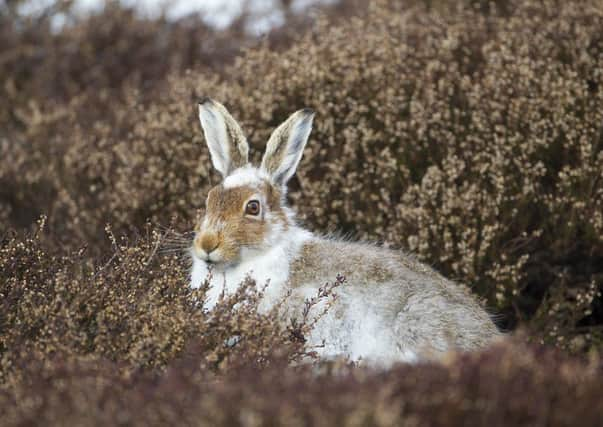Animal kingdom's camouflage tactics inspire military methods of concealment


In this article, Erin McDaid talks about camouflage and concealment.
The natural world can be brutal and animals have developed a range of ingenious methods of camouflage to protect them from potential predators, and in the case of predators to reduce the likelihood of detection by potential prey.
Advertisement
Hide AdAdvertisement
Hide AdThe three basic forms of camouflage employed by wild animals are concealing, disruptive, and disguise. Each form has myriad of variations and as animals have evolved some have adapted to utilise more than one of the basic forms.
When using concealing camouflage an animal takes on similar colours or shading to its background habitat. This is a key reason that animals that dwell in the Arctic, such as polar bears and Arctic foxes are white whilst animals that live in forests, such as deer, are brown.
Whilst mammals and birds are not able to change their colours rapidly, some species of reptile and fish can; a well known example being the chameleon. Cephalopods including cuttlefish, squid and octopuses can switch colour in the blink of an eye, enabling them to blend in seamlessly with any natural background. When kept in captivity they have shown that they can just as easily blend in with artificial backgrounds too.
In order for mammals such as the mountain hare to transition from white in the winter to brown in the summer they must shed their coats to maintain their ability to blend in; a white coat in summer long after the snows have melted would be of little use in fooling predators.
Advertisement
Hide AdAdvertisement
Hide AdDisruptive camouflage employs patterns and countershading to make it difficult for other animals to see the outline of their bodies. Classic examples of this approach can be seen in large mammals including zebras, tigers and leopards. A zebra’s stripes are thought to foil likely predators whilst leopards and tigers use their markings to make it easier for them to stalk prey without being noticed. The ground nesting nightjars use both disruptive and concealing camouflage to great effect. Individual nightjars have slight differences in appearance and it’s been shown that they choose to roost and nest on ground that most closely matches their markings to provide maximum concealment.
Disguise camouflage is similar to concealing camouflage except that the animals use their shape and even texture to help them blend into their surroundings rather than solely relying on colour. This method is employed by many species of insect. Mimesis refers to a form of disguise camouflage where a whole plant or animal resembles something that occurs in a potential predator’s environment which it would consider inedible or unattractive. A prey creature might take the form of a twig, leaf, stone or animal dropping, or even take it a stage further by resembling a carcass.
Geometrid moth caterpillars are very twig-like and use stretched, stick-like poses when on their food plants. Sometimes known as inch-worms they seem to ‘measure the earth’ as they move along in their characteristic looping style. However as with many forms of camouflage it is sometimes only effective when the animal employing it remains still.
The military have sought inspiration from the animal kingdom in developing their own forms of camouflage and the traditional classic brown and green uniforms were designed to both concealand break up the outline of soldiers when in the field. The application of camouflage to aircraft began during the First World War. Before the days of radar, detection of enemy planes relied upon sight so countershading became common with the top of the aircraft painted in a disruptive pattern to match the ground and whilst the undersides were painted to match the sky.
Derbyshire Wildlife Trust is campaigning for a Wilder Derbyshire and a Wilder Future. You can support this wilder vision and stand up for wildlife by joining the trust. To learn more,click here